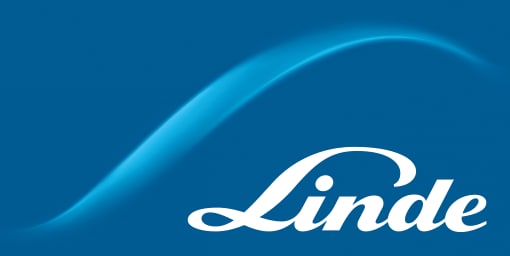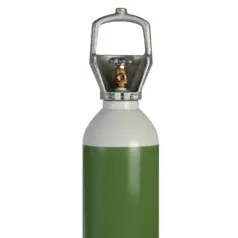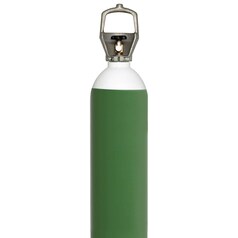
Environment friendly alternatives to meet the needs of many industrial production processes
Liquid Nitrogen (LIN) and carbon dioxide (CO2) are extremely effective cooling agents due to the low boiling point, which makes them environmentally friendly alternatives to conventional cooling processes, which often involve potentially harmful refrigerants, large quantities of water or dust and fumes. In addition, LIN and CO2 are environmentally sound alternatives to conventional cooling processes, which often involve potentially harmful refrigerants, large quantities of water or dust and fumes. Because they are inert, these gases also eliminate the risk of fire or explosion.
Providing rapid freezing and cooling capabilities for many industrial production processes
LIN and CO2 are commonly used to ease productivity and enhance quality in concrete mixing, asphalt paving, ground freezing, rubber hose production, glass production, plastic film blowing, grinding, welding and machining. Cryogenic condensation with LIN is also an effective way of purifying waste air and recovering valuable volatile organic compounds (VOC). In the manufacture of aluminium, dross cooling with argon eliminates fumes and dust, while increasing recovery rates. The benefits of LIN in extrusion plants include higher production rates, improved surface finish and increased die lifetime.
Cryogenic solutions to preserve food quality
Cryogenic solutions are also widely used in the food industry. LIN and CO2 are gentle,
effective ways of quickly
lowering the temperature of food products to facilitate processing or preserve quality. Dry ice or solid
carbon
dioxide is a convenient cooling agent for smaller batches, whereas cryogenic, liquid gases are an
eco-friendly,
flexible and low-noise way of maintaining the precise temperature of entire trucks during transit.
LIN and CO2 are commonly used to ease productivity and enhance quality in concrete mixing, ground freezing,
rubber hose production, glass production, plastic film blowing, grinding, welding and machining. Cryogenic
condensation with LIN is also an effective way of purifying waste air and recovering valuable volatile
organic
compounds (VOC).

Did you know?
- ● Nitrogen and carbon dioxide are inert gases, which also eliminates the risk of fire or explosion.
- ● Liquid nitrogen (LIN) and carbon dioxide (CO2) are extremely effective cooling agents due to the low boiling point of LIN (–196 °C) and the low sublimation point of CO2 (–78.5°C).
- ● At –79°C liquid carbon dioxide converts to solid, which is also known as dry ice, is a flexible, easy-to-use cooling medium.
Freezing and cooling areas
In the fight against bacteria, one of the most effective weapons is chilling and freezing. Cryogenic freezing also maintains the natural quality of food. Freezing a product leads to the formation of ice crystals. The smaller and more evenly distributed these are, the better the quality and taste of the defrosted product. Quick-freezing at cryogenic temperatures is the only way to ensure that small crystals are created uniformly, both inside and outside the product’s cells. Cryogenic liquid gases also provide an effective, flexible and low-noise way of maintaining the precise temperature of chilled or frozen foodstuffs during transit.
Cryogenic condensation with liquid nitrogen (LIN) is a flexible, cost-effective process which can be used in a wide range of applications.
We are focused on the following features:
• Treatment of highly concentrated exhaust gas flows,
• Recovery of valuable components,
• Realization of low residual concentrations,
• Reuse of vaporized liquid nitrogen as inert gas for inerting and blanketing.
We offer a range of standardized products for you to choose from (CIRRUS M50, M150, M500). If the range of
standard units do not fit your needs we can also provide customized units that are tailor made to your
requirements, all of which we offer installation, start up and liquid nitrogen supply.
Once skimmed, thermiting of dross should be prevented as rapidly as possible to preserve its metallic aluminum content which can range from 18% to 80% but cooled safely without polluting the environment. The argon based dross cooling solution Inert Gas Dross Cooler (IGDC) from the STAS company is able to cool all types of dross at any temperature without the use of mechanical moving parts and cooling water, whilst simultaneously snuffing out the thermitting reaction and stopping the generation of fumes and dust.
Advantages:
• Completely safe, because no water is used in either the cooling of the dross or with the equipment.
• Environmentally sound, therefore no emission of dust or fume.
• Provides for easy working conditions, therefore is operator friendly.
• No moving parts, thus minimizing maintenance costs as well as emitting no noise.
• Retains as much of the aluminium alloy present in the dross immediately after skimming (can range from 18-80%)
as possible.
• Treats all kinds of dross (black and white dross).
• Easy to operate, efficiency is independent of the filling level.
Under certain conditions, ground freezing with liquid nitrogen is the best solution compared to conventional soil
treatment methods.
• The set-up of a LIN-freezing plant can be done quickly as large quantities of specialist hardware is available
in stock.
• The investments for a LIN freezing plant is only a fraction of the amount to install a brine freezing unit.
• The temperature of the frozen soil is substantially lower compared to the use of a brine freezing plant, which
increases stability.
• The low temperature of LIN (-196°C) allows freezing in about 4 to 7 days which is substantial faster than the
brine freezing process which easily can take a month.
• Environmental friendly process, no hazardous substances, no vibrations and no ground water pollution or
extraction.
• Automatically working process. Flexible in design of frozen soil. Combination of sealing and static support.
• High tolerance to soil humidity (5 – 100%). Frozen soil is 100% watertight, there is no leakage.
• The hardness of frozen soil is comparable to concrete.
• The solidification of the soil is only temporary.
• After shutting down the LIN-supply the frozen soil will melt in a few weeks.
Thermal spraying is the collective expression for several different spraying methods, one of which is flame spraying. When spraying equipment, the additive material, which can be in the form of powder, wire or sticks, is heated to smelting point or a practically smelted condition. The heated material is finely powdered and sprayed by means of a gas flow towards the surface of the piece (the substrate) where it fastens and stiffens. The surface cover can be used as is or worked to the correct dimensions.
Flame spraying with the correct additive material can improve the surface’s resistance to corrosion, wear and high temperatures. You can achieve surfaces with high or low friction or alter the surface’s conductivity. Damaged surfaces can be repaired and faulty parts can be corrected to the right dimensions.
Rapid cooling is sometimes required during industrial production processes. Liquid nitrogen (LIN) and carbon
dioxide (CO2) are popular cooling agents due to the low boiling point of LIN (-196°C) and the low sublimation
point of CO2 (-78,5°C). This enables large-scale heat transfer in a short time period.
Advantages of rapid cooling agents:
• Unlimited cooling capacity.
• Flexibility to reach temperatures as low as -196°C.
• Excellent peak-shaving qualities.
In the production of tires for passenger cars some finalizing work has to be done in order to make the tire
perfect and attractive. This means rubber flashes need to be removed. Flashes can be found on the surface of a
tire on the friction area as well as on the shoulders.
Deflashing can be done easily by dipping a rotating tire into liquid nitrogen for cooling the flashes making them
brittle enough for scrapers to wipe them off. We offer: Various types of cryogenic deflashing machines including
shot blasters and tumblers for a wide range of moulded rubber parts.
Development of special devices based on your demands. Deflashing tests on your specific products and provide you
with the most suitable machine with consideration paid to all economical and technical aspects. Support with
equipment installation and assistance during start-up.
Shrink fitting is a method used in making mechanical joints when axles, bushings and similar are to be fitted
inside a part with a hole. The hole is made slightly too small for fitting at even temperature, which means that
the outer part needs to be heated or the inner part needs to be cooled.
Heating the outer part may take a long time, and in some cases metallurgical reasons may prevent heating
altogether. However, cooling the inner part will not affect the property of the metal, and can be achieved much
faster.
When using liquid nitrogen as a coolant, a temperature difference of up to 200 °C can be achieved. In order to
cool the inner part it should be kept in liquid nitrogen (temp. -196 °C), which will make it shrink enough to fit
in. The joint becomes durable when the temperatures of the parts are even.
The solidification of concrete is an exothermic process. As large quantities of heat are released inside the
concrete structure, it is important that temperature changes are monitored and influenced, in particular:
• In cases with high quality requirements for concrete such as bridges, tunnels and storage tanks.
• In cases requiring large volumes of concrete such as dams, large foundations.
• In hot climates.
Solution cooling with liquid nitrogen has proved to be an effective and cheap method. One particular advantage is
that coolant costs are generated only if cooling is really needed. Nitrogen cooling can be applied to cool the
aggregates, mixing water or mobile mixer. Using cryogenic cooling and freezing power to enhance safety,
productivity and environmental performance across a wide range of applications.
- Food freezing & cooling
- Cryogenic condensation
- Dross cooling
- Ground freezing
- Thermal spraying
- Rapid cooling
- Cryogenic deflashing
- Shrink fitting
- Cooling of concrete
Food freezing & cooling
In the fight against bacteria, one of the most effective weapons is chilling and freezing. Cryogenic freezing also maintains the natural quality of food. Freezing a product leads to the formation of ice crystals. The smaller and more evenly distributed these are, the better the quality and taste of the defrosted product. Quick-freezing at cryogenic temperatures is the only way to ensure that small crystals are created uniformly, both inside and outside the product’s cells. Cryogenic liquid gases also provide an effective, flexible and low-noise way of maintaining the precise temperature of chilled or frozen foodstuffs during transit.

CRYOLINE food freezer for maximum freezing performance
We offer a wide range of CRYOLINE® freezers for food chilling, which meets these modern requirements for the industry. See more about the freezer types in the added product datasheets.
Benefits of Linde cryogenic freezers:
- ✓ Fast in-line freezing and cooling, thus preserving flavour
- ✓ Higher quality of the frozen product compared with slower methods
- ✓ Reduced drip loss on defrosting
- ✓ Less dehydration resulting in a higher yield
- ✓ Lower space requirements
- ✓ Different types of freezers available to suit the requirements
of different foodstuffs.
.png)
CRYOLINE pellet/moulded-shape freezer is the only cryogenic freezer designed to produce formed food shapes
What do our customers say?
"We as a young company have a product that we want to scale to the market, and Linde knows the process equipment. It is very valuable to us that the supplier wants to be part of our full journey. That was Linde has been to us."
Frida Persson, Mycorena CTO Production Dpt.



